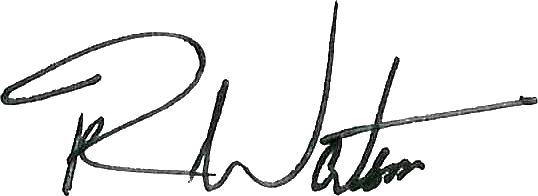Please forgive the lengthy period between our communication. There have been multiple attempts at starting a letter, but markets have experienced a myriad of emotions, ranging from elation to turmoil, and not only over the course of the past several months, but often within the window of a single trading day.
Most would refer to markets described above as being volatile. In the 16th century, the term volatile was used to describe meal ground by millers so fine that it would blow away as the powder began to accumulate. Today, many investors regard market volatility as the loss of a different kind of meal due to the perceived loss of wealth. Perceived loss? Doesn’t wealth fall when the market declines, yes, of course, but it only affects the investor when they sell into a decline, thus realizing the lower value. This is not the position of the long-term investor, who, with patience, will again see their wealth grow to new highs, never having worried about when to reinvest because they stayed the course. As a result, market volatility reflects both the disorderly downside movement of markets and disorderly upside movements, though we tend to define the latter not in terms of volatility but in degrees of how smart we must be.
As this is written, there are two primary drivers of market volatility, and both were initiated within the White House: tariffs and rhetoric regarding the removal of Federal Reserve Chairman Powell. To the latter, neither the President nor Congress can remove the Federal Reserve Chair, except for cause. The President can revert to his childhood by calling Jerome Powell a “major loser,” but the Chairman has been one of the few rational voices emanating from Washington for a few years now. No, he’s not perfect, and he made the mistake of referring to inflation as “transitory,” but we all make mistakes, including presidents. Monday, the Dow Jones Industrial Average closed almost 1,000 points lower, all on the fear our President would fire Chairman Powell. If this happens, a 1,000-point drop will only be a precursor, but Mr. Powell has stated several times he expects to complete his term in May 2026, and we do as well. (Proving our point above, as this letter was being completed, President Trump stated he has no intention of firing Chairman Powell. We are thankful for the market stability this immediately provided and for this acceptance of the law.)
Protectionism is a misnomer. The only people protected by tariffs, quotas and trade restrictions are those engaged in uneconomic and wasteful activity. Free trade is the only philosophy compatible with international peace and prosperity.
Walter Block
Dr. Block, now in his 80s, is a libertarian economist, who received his doctorate from Columbia University, though we doubt neither Dr. Block nor Columbia desire to recognize their early relationship. For that matter, we also believe much of Dr. Block’s work borders on the absurd, but the quote above could not be more correct.
Tariffs have been a fundamental tool of trade policy throughout American history, shaping the nation’s economic development, while generating considerable debate among economists, policymakers and the public. Reduced to its common denominator, tariffs are taxes imposed on imported goods; however, as we are seeing firsthand, their influence extends far beyond revenue generation, affecting everything from domestic industries and consumer prices to international relations and global trade patterns, such as with supply chains.
American tariffs originated with the birth of the nation itself. Upon declaring independence, Treasury Secretary Alexander Hamilton advocated for tariffs as a source of revenue and a tool to protect America’s infant industries from established European competitors. For his efforts, Congress established the Tariff Act of 1789, which became the first major piece of legislation signed by President George Washington. Since a personal income tax was not enacted until 1913, tariffs initially provided up to ninety percent of federal receipts and have since materially shaped economic policy for two centuries.
Throughout the 19th century, tariff policy became one of the most divisive issues in American politics. Northern manufacturing interests generally favored high protective tariffs to shield domestic industries from foreign competition. Meanwhile, the agricultural South, which exported cotton and other commodities, while importing manufactured goods, advocated for lower tariffs to reduce the costs of imports and avoid potential retaliatory measures against their exports. Needing to finance the Civil War, the Union government implemented significantly higher tariffs. With their victory, high tariff walls were maintained and then expanded, culminating in the McKinley Tariff Act of 1890 and the Dingley Tariff Act of 1897, which pushed certain tariff rates to what then was the highest level on record. Still, whether causal or coincidental, this accompanied America’s season of rapid industrialization.
The early 20th century saw a gradual shift toward policy moderation, but this trend was dramatically reversed with the passage of the infamous Smoot-Hawley Tariff Act. Signed into law by President Herbert Hoover in June 1930, and only months from the stock market crash of 1929, the legislation wrote the most notorious chapter in U.S. tariff history by raising duties on over 20,000 imported goods to record levels, with average rates reaching 45-50 percent. The Act was originally conceived to protect American farmers from agricultural imports, but, as is typical of our politicians, it moved through Congress, expanding dramatically to cover thousands of products across virtually all sectors of the economy.
The timing of Smoot-Hawley proved catastrophic. Implemented in the early stages of the Great Depression, the high tariffs prompted swift retaliation from trading partners. Canada, Britain, France, Germany, and many other nations, quickly imposed their own retaliatory tariffs against American exports. In addition, prices for imported goods increased at the very time personal incomes were declining, economic cooperation was damaged when it was most needed, and financial flows between nations were disrupted. These events set in motion a collapse in global trade between 1929 and 1933, with U.S. imports falling by 66 percent and exports by 61 percent. Many economists continue to see this event as one that significantly deepened and prolonged the worldwide economic depression.
The Smoot-Hawley experience fundamentally changed how economists and policymakers viewed tariffs. It demonstrated the potential for protectionist policies to trigger destructive trade wars and highlighted the interconnected nature of the global economy. As desperate measures were needed to combat the Great Depression, Congress passed the Reciprocal Trade Agreements Act of 1934, which empowered the president to negotiate bilateral tariff reductions and is what provides President Trump his executive order authority on tariffs.
While this may be a basis for economic chaos today, there was a positive and dramatic shift in U.S. trade policy after World War II, as America took the lead in establishing the General Agreement on Tariffs and Trade (GATT) and later the World Trade Organization (WTO), institutions dedicated to reducing global trade barriers. Until the implementation of American tariffs this year, the WTO represented eighty percent of all global trade. While President Trump has stated his intention for America to leave the WTO, it has yet to officially do so.
The consequences of tariffs are numerous, rippling through the economy in complex ways, affecting employment, industrial development, consumer welfare, optimal capital allocation, and international relationships. Proponents of tariffs point to several potential benefits they can bring to a national economy. One of the oldest and most frequently cited is the “infant industry” argument, which suggests that newly established domestic industries need temporary protection from foreign competition until they achieve the economies of scale and expertise necessary to compete internationally. Somewhat related is the theory that tariffs preserve jobs in import-competing sectors by shielding them from foreign markets, particularly those with lower labor costs. For example, no one likely cares that one third of global sock production comes from a single town in China, especially when labor costs are generally less than $0.50 per pair, but may care when an American steel worker earns almost 75 percent more than a Nippon steel worker in Japan. Of these two examples, the former is generally no longer a valid argument in America, while the latter represents a continued shrinking part of the overall economy.
For President Trump, tariff justification rests on national security, negotiation and revenue considerations. As we have penned before, the only given with Xi Jinping’s Communist China is global domination, which includes taking, likely by force, the Republic of China’s last viable remnant, Taiwan. That Taiwan Semiconductor Manufacturing Company is the world’s largest semiconductor foundry, and with computer chips in everything from automobiles to zithers lends urgency to Trump, as it should to all of us, to have certain manufacturing reshored in America.
A close second in importance to the President involves how tariffs can provide leverage in international trade negotiations. Instead of using tariffs as a threat, however, the President enacted tariffs that were steeper and further reaching than previously communicated and not seen in over one hundred years. It should be apparent that the President’s “art of the deal” involves shock and awe, which has upended allies, enemy states, and financial markets around the globe, including our own. Unfortunately, anyone who states they know the cost of these tariffs should include a disclaimer that notes the estimate is only good in the moment, for tariff parameters have been frequently changed, sometimes overnight. While important to know the cost to the overall economy, the indirect, unmeasurable cost could be the most important if this uncertainty breeds sufficient concern among American consumers who, comprising seventy percent of gross domestic product, begin to shelter, forcing a recession. If tariffs are being enacted to help offset the cost of extending current tax policy beyond the current December 31 expiration, the President may see this backfire when previous supply chains are in disarray, imports are turned away due to increased costs and people spend at lower levels of income.
Despite their potential benefits, tariffs also create numerous economic problems, withhigher consumer prices being the most direct. For example, when President Trump imposed tariffs on washing machines in 2018, the price of washing machines increased approximately 12%, costing American consumers an estimated $1.5 billion annually. This functioned as a regressive tax, disproportionately affecting lower-income households who spend a greater share of their income on goods.
Another economic cost involves interfering with the principle of comparative advantage, in other words, the idea that countries benefit by specializingin what they produce most efficiently and trading for other goods. By artificially making imported goods more expensive, tariffs can cause resources to flow to less efficient domestic industries, reducing overall economic productivity. Related to this is the supply chain. As is increasingly being reported, an automobile may begin assembly in the United States, be sent to Canada, then back to the United States for final assembly, but may well contain parts imported from Canada, Mexico and other locales. Tariffs on these intermediate goods disrupt complex supply chains, causing production delays and increasing costs throughout the manufacturing process and, ultimately, to the consumer.
Beyond their economic effects, tariffs also strain diplomatic relationships and complicate cooperation on non-trade issues. They can also encourage the formation of competing trade blocs, potentially fragmenting the global economy. Too, as the Smoot-Hawley experience demonstrated, tariffs rarely exist in isolation; trading partners typically respond with retaliatory tariffs on exports from the tariff-imposing country. For example, when the U.S. imposed steel and aluminum tariffs in 2018, the European Union, Canada, Mexico, and China all responded with tariffs on American exports. This retaliation particularly hurt American farmers, necessitating billions in government aid to offset their losses, which negated the revenue benefit received from the tariff.
Tariffs create both winners and losers within a national economy, but unevenly so. To the former, tariffs tend to be concentrated among specific industries and regions, creating vocal constituencies that advocate for protection. Meanwhile, the costs are diffused across all consumers, who individually may not notice small price increases on many products even as their cumulative effect is substantial.
The history of tariffs in the United States reveals a complex and often contradictory legacy. They have at times protected vulnerable industries and workers, contributed to industrial development, and provided leverage in international negotiations. They have also raised consumer prices, provoked destructive trade wars, and reduced economic efficiency. Perhaps the most important lesson from this history is that tariffs are rarely a simple solution to economic challenges. Their effects ripple through the economy in complex ways that can be difficult to predict, potentially undermining the very goals they aim to achieve. In an increasingly interconnected global economy, the impulse to use tariffs as an economic tool remains strong, particularly during periods of economic uncertainty or rapid technological change. Yet the lessons of episodes like the Smoot-Hawley tariffs remind us that economic nationalism can have far-reaching unintended consequences.
As the United States navigates an increasingly complex global economic landscape, policymakers face the challenge of balancing these competing considerations. The most effective approach likely involves selective, strategic use of tariffs as one tool within a broader, nuanced trade policy —neither embracing indiscriminate protectionism nor pursuing unfettered free trade without regard for its distributional consequences. The U.S. experience with tariffs ultimately demonstrates that trade policy involves fundamental questions about not just economic efficiency but also fairness, security, and the kind of economy and society we wish to build. These questions have no simple answers, but understanding the multifaceted impacts of tariffs provides an essential foundation for addressing them thoughtfully.
Despite weeks of volatility and uncertainty, we’ve witnessed similar acts of this play many times before and believe the market will begin to see better days in the not-too-distant future. As we understand the Administration’s priorities, after trade negotiations will come tax policy, then regulatory reform. The latter two discussions will be material tailwinds to a market that could end the year appreciably higher than we see today. For now, we continue to seek value in the market that rewards us over time, as well as consider what tax planning we can employ; it is how we’ve approached market corrections for forty years and, Lord willing, will do so for another forty.
As always, we are grateful for you; you are why we are here and why we enjoy what we do.
Kind regards,




